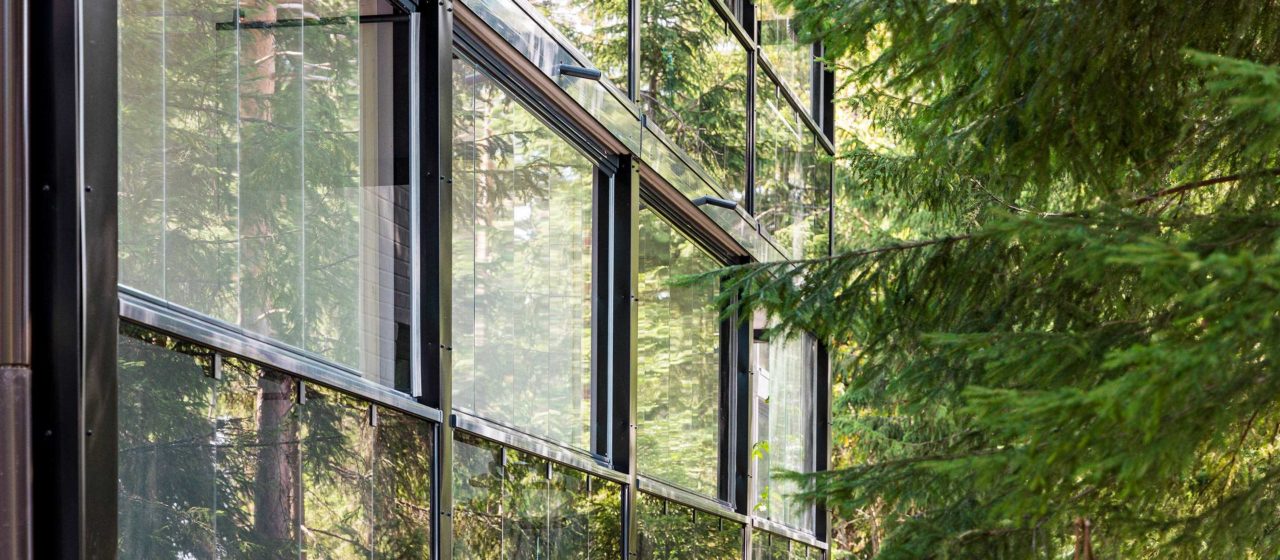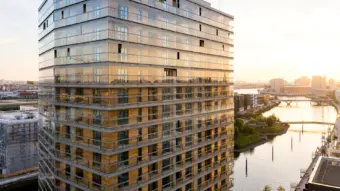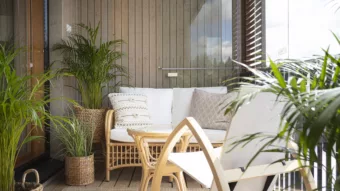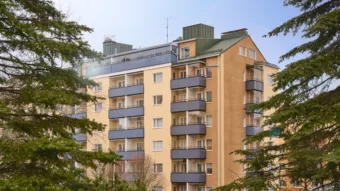
Lumon integrated and energy saving balcony systems
The fact is that all kinds of production jobs call for energy and result in emissions. Rare are such products that allow for as fast compensation of their environmental impacts as the balcony and terrace glazing solutions. It takes, on average, somewhat over three years to compensate for the negative environmental impacts that result from the manufacture, transport and installation of the glazing, besides considering the energy savings that have been obtained through using the glazing.
Carbon dioxide emissions may be estimated by using a formula, in which the carbon dioxide emissions that result from the manufacture of one balcony glazing solution correspond to driving a car for 1,000 kilometres. The positive environmental impacts that have been caused by the glazing include the reduced heating costs and the reduced reparation need of the facade of the building, for example. According to scientific studies that have been made in Finland and around the world, the heating energy savings will typically vary from 2 to 20 % in the European area.
Materials consist of 95 % of glass and aluminium – the recycling degree of raw materials is 95 %
Themes, like the environment, recycling of materials and reduced carbon footprint, are very important themes to Lumon. The purpose of our different projects that relate to the environment and the optimisation of our production is to use the most advanced methods in our production plant to reduce the amount of material waste and environmental hazards. The percentage of glass and aluminium in the Lumon balcony and terrace glass products is 95 %. They are almost entirely suitable raw materials for recycling. At Lumon, the percentage of glass and aluminium-based cutting waste in our production plant is up to 95 %. The waste materials are used for producing reusable raw materials in the recycling plant.
By the way, did you know that roughly 75 % of produced aluminium materials is still in use, or that the proportion of recycled glass in the Lumon glazing solutions is about 20%?
The glass sections are cut to size of the object, so that all factors that relate to the functionality of the glazing can be considered in advance. The unique custom-made products enable Lumon to produce a glazing solution that fits completely in with each object, no matter whether the question is of one or several hundreds of balconies. It could be imagined that custom-made products would increase the amount of material waste in our production, but the situation is quite the opposite. When the products are custom-made and their size is exactly right, there is no need to order additional sections afterwards or to replace any glass sections with more suitable ones. Our principle of ”All to be put in order at one go” will save our materials, energy and capacity. We avoid paying additional visits to customers for the sake of repairs, and, thus, we and the customer save a lot of time and trouble.
Not only do we at Lumon recycle our raw materials but also our packing materials: we have also invested in and improved the recycling system of packing materials. Over the years, we have reused the pallets and spacers that have been used in the glass packages. After installation, the reusable packing materials will be returned to the plant and recycled further. Last year, we made a variety of tests and could, thus, reduce the number of spacers by 25 %. They are used between glass panes. The reduced amount of packing materials will also provide the company with economic savings. Even more delightful is to note that the reduced amount of carbon dioxide emissions has also reduced the need to produce and deliver new packing materials to Lumon.

-
Wooden buildings and glazed balconies: A perfect blend of design and sustainability
Read more…The architectural landscape is evolving, with sustainability and innovative design at the forefront. Wooden buildings, coupled with glazed balconies, offer a unique blend of natural materials and modern aesthetics. For the construction industry, this combination presents an exciting opportunity to create stylish, energy-efficient spaces that meet the growing demand for sustainable building solutions.
-
[PRO BLOG] Maximizing balcony space: Smart solutions for modern living
Read more…Balconies have long been a valued feature in residential architecture, offering a connection to the outdoors and enhancing the aesthetic appeal of buildings. However, their role has evolved significantly in recent years. No longer just decorative, balconies are now valuable extensions of indoor living spaces, particularly in high-rise urban settings. With the rise of urbanization and changing residential needs, the demand for multifunctional, adaptable, and energy-efficient balcony solutions has never been greater.
-
[PRO BLOG] Lumon eRailing: A new opportunity for solar energy in urban living
Read more…Construction and housing are undergoing a transformation as energy efficiency and sustainable solutions become increasingly important. Lumon eRailing is a new solution that integrates solar energy into urban living. It allows housing companies to generate electricity from their balconies without compromising the appearance or functionality of buildings.


